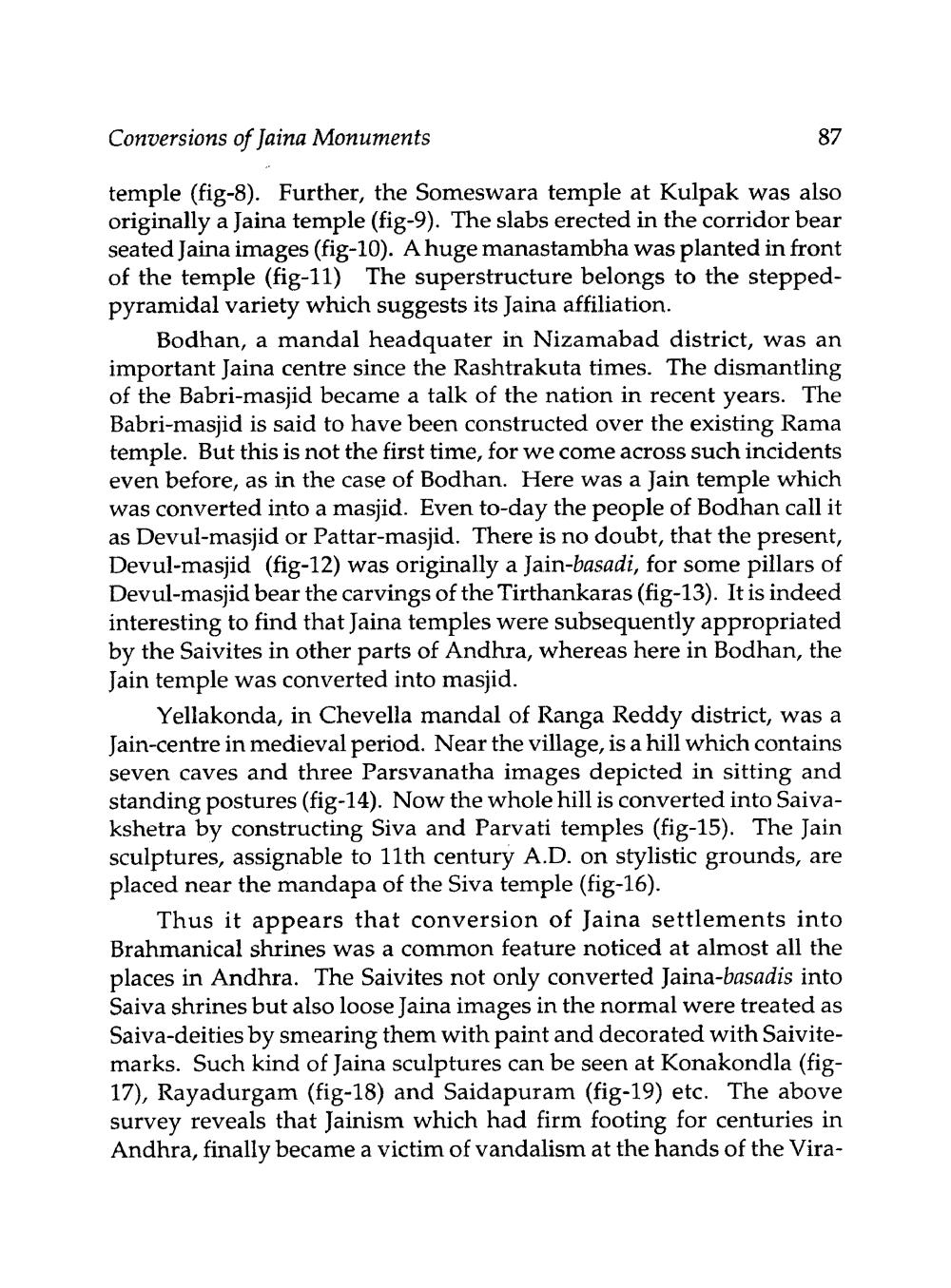________________
Conversions of Jaina Monuments
87
temple (fig-8). Further, the Someswara temple at Kulpak was also originally a Jaina temple (fig-9). The slabs erected in the corridor bear seated Jaina images (fig-10). A huge manastambha was planted in front of the temple (fig-11) The superstructure belongs to the steppedpyramidal variety which suggests its Jaina affiliation.
Bodhan, a mandal headquater in Nizamabad district, was an important Jaina centre since the Rashtrakuta times. The dismantling of the Babri-masjid became a talk of the nation in recent years. The Babri-masjid is said to have been constructed over the existing Rama temple. But this is not the first time, for we come across such incidents even before, as in the case of Bodhan. Here was a Jain temple which was converted into a masjid. Even to-day the people of Bodhan call it as Devul-masjid or Pattar-masjid. There is no doubt, that the present, Devul-masjid (fig-12) was originally a Jain-basadi, for some pillars of Devul-masjid bear the carvings of the Tirthankaras (fig-13). It is indeed interesting to find that Jaina temples were subsequently appropriated by the Saivites in other parts of Andhra, whereas here in Bodhan, the Jain temple was converted into masjid.
Yellakonda, in Chevella mandal of Ranga Reddy district, was a Jain-centre in medieval period. Near the village, is a hill which contains seven caves and three Parsvanatha images depicted in sitting and standing postures (fig-14). Now the whole hill is converted into Saivakshetra by constructing Siva and Parvati temples (fig-15). The Jain sculptures, assignable to 11th century A.D. on stylistic grounds, are placed near the mandapa of the Siva temple (fig-16).
Thus it appears that conversion of Jaina settlements into Brahmanical shrines was a common feature noticed at almost all the places in Andhra. The Saivites not only converted Jaina-basadis into Saiva shrines but also loose Jaina images in the normal were treated as Saiva-deities by smearing them with paint and decorated with Saivitemarks. Such kind of Jaina sculptures can be seen at Konakondla (fig17), Rayadurgam (fig-18) and Saidapuram (fig-19) etc. The above survey reveals that Jainism which had firm footing for centuries in Andhra, finally became a victim of vandalism at the hands of the Vira




